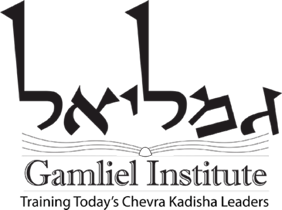  |
|
| 10 Cheshvan 5763 – October 16, 2002 | Mordecai Plaut, director Published Weekly | |
IN-DEPTH FEATURES
Burial in Jerusalem: The Har Menuchos Cemetery
by M. Samsonowitz
Part I
For two thousand years, it was the dream and hope of many individuals to be buried in Jerusalem.
The really inspired would undergo a months-long trip on bumpy roads and rolling seas and then spend the remainder of their lives suffering an impoverished existence in the desolate Holy Land to ensure a grave in Eretz Hakodesh.
The less inspired would try to get a symbolic clod of Holy Land earth to be reverently placed in their grave.
Today, one doesn’t have to be inspired or determined to merit a final resting place in Eretz Hakodesh. All one needs is about $10,000.
“Today its cheaper and easier than ever,” says Rav Elazar Gelbstein, head of the General Chevra Kadisha, commonly known as the “Perushim Chevra Kadisha.”
Jewish traditions explain that it’s a zechus for every Jew to have his own daled amos in Eretz Yisroel. Techiyas hameisim will be easier, there is a special atonement that one receives for being buried in Eretz Yisroel, and one suffers less chibut hakever. In the ears of every Jewish cheder child rings the final admonition of Yaakov Ovinu to his son Yosef, “Do not bury me in Egypt. When I sleep with my fathers, take me out of Egypt and bury me in their burying place.” (Bereishis 47:29)
The novi Zecharya tells us that techiyas hameisim will begin on Har Hazeisim, the mountain opposite the Beis Hamikdash. Obviously, if a Jew has a choice where he’d like his final resting place to be, it would only be Eretz Hakodesh. And what better place could there be than Jerusalem, the place where techiyas hameisim will begin?
In fact, with the advance of burial services in Jerusalem, and concomitant with the advances in transportation and technology, Jews are coming to be buried in Eretz Yisroel in record numbers.
*
The story of burial in Jerusalem goes back thousands of years, to the times of the first Beis Hamikdosh. Since Jews were aware that techiyas hameisim would start from Har Hazeisim, this mountain adjoining Jerusalem was designated a cemetery where Jews from Jerusalem and the environs came to be buried. Many layers exist on the side the mountain where ancient Jews were buried.
Jerusalem’s “modern” burial history goes back 500 years, when the small community of primarily Sephardic Jews who lived in Jerusalem formed their own Chevra Kadisha as part of the services being offered by the Vaad Eida HaSephardit. The Vaad was headed by the various Rishon Letzions, who were the premier Sephardic rabbinic authorities at the time in Jerusalem. During those years, Ashkenazic Jews were a negligible minority in Jerusalem and didn’t have their own kehilla services.
When the modern renaissance of Jewish settlement in Jerusalem began, with the immigration of the Vilna Gaon’s disciples in the early nineteenth century, the number of Ashkenazic Jews grew and they founded their own kehilla in 1840. Sixteen years later they formed their own Chevra Kadisha, in 1856.
The change is noted in the old burial record book: “Until now, we Ashkenazim were in the shade of the Sephardim, and from today, we separated from the Sephardim and bought our own plot. We founded our own Ashkenazic Chevra Kadisha comprised of those engaged in gemilus chassodim, and now the names of those who have departed and who were buried in the plot will be listed here, beginning from 5617 (1856). May death be swallowed up forever, and may Hashem wipe tears from every eye.”
The Ashkenazic Chevra Kadisha came to be known as the “General Chevra Kadisha” or the Perushim, as it is colloquially called. It was headed by Rav Gelbstein, a son-in- law of the Yishuv Hayashan’s leader HaRav Yosef Chaim Sonnenfeld. Rav Gelbstein’s grandson, Rav Elazar Gelbstein, still heads it today.
With the large aliyot to Israel from Eastern Europe and Arab lands, the population in Jerusalem grew dramatically in the second half of the nineteenth century and the first half of the twentieth century. Throughout this time, the spacious Har Hazeisim remained the sole cemetery in use.
During the 1920s-40’s, violence washed over Eretz Hakodesh as the Arabs increasingly objected to Jewish settlement. In Teves-Shvat 1948, months before the declaration of the State of Israel, it became increasingly dangerous to bury the dead in Har Hazeisim, an area exposed to Arab neighborhoods. The last burial to take place on Har Hazeisim was in Adar, 1948. Several Chevra Kadisha workers were killed during the riots and it was no longer possible to risk burial there.
When the State of Israel was declared on 5 Iyar that year, Arab violence burgeoned particularly from the areas in East Jerusalem where the Arabs were concentrated. The Jews were in a dilemma. Although Har Hazeisim was out of their hands, the conflict raged on, and people continued to die and had to be buried.
A second Ashkenazic Chevra Kadisha had been founded in 1939 by Zionist leaders of the yishuv including (Israeli President) Yitzhak Ben-Tzvi, Judge Gad Frumkin, Arthur Rupin (of Keren Kayemet LeYisroel) and more moderate religious leaders like Yerachmiel Amdursky. Creating the new Chevra Kadisha Kehillas Yerushalayim was part of the Zionist strategy to take over all the kehilla’s functions so they would not need the Yishuv Hayashan for anything. These Zionist leaders prevailed upon the British governors in the late 1940s to give them a parcel of land to establish another cemetery when Har Hazeisim was too dangerous to reach. The British gave them the area which is today the Sanhedria cemetery at the corner of Shmuel Hanovi and Bar Ilan streets in the center of the religious neighborhoods, but which in those days was an empty field on the outskirts of Jerusalem.
Among the first to be buried there was the wife of the Yerushalmi tzaddik, HaRav Aryeh Levine.
The Zionists only permitted the Kehillas Yerushalayim Chevra Kadisha to bury there, which put the Perushim Chevra Kadisha into a quandary. When five prominent Yishuv Hayashan members died in Adar 1948, their families refused to use the services of Kehillas Yerushalayim. They instead took over another empty lot near Sanhedria (where the municipality’s sanitation services were located on Shmuel Hanovi street) and clandestinely buried the five there, while the Haganah shot in their direction to intimidate them. The five were buried there temporarily, with the explicit condition that when other land would become available, they would be reburied there.
By Tammuz, no solution had been found. When the son of HaRav Yosef Chaim Sonnenfeld died in the hospital at that time, it was unthinkable to bury him in a Zionist cemetery. Dr. Wallach of the Shaarei Tzedek hospital agreed to bury him in some land near his hospital which had been used to graze cows to supply milk for the hospital children. He was buried there on 12 Tammuz, 1948.
Over 150-200 Yishuv Hayashan people were buried in the hospital plot over the following two years, with the last burial being on 19 Adar 1950.
A plot of land in Sheikh Badar, a field located near today’s Givat Ram, sandwiched in between the Supreme Court and the Knesset, was turned into a makeshift cemetery when the Sanhedria cemetery became inaccessible. The Perushim had to mount a major lobbying effort to receive a section of this lot. They used it from 19 Adar 1950 to Cheshvan 1951 while the large-scale Har Hamenuchos was being prepared as Jerusalem’s main cemetery. When it was first planned, Har Hamenuchos was located far away on the outskirts of Jerusalem, although today it is not far from Givat Shaul and Har Nof.
Dead were buried in Sheikh Bader for close to three years. An adjoining abandoned quarry was also turned into a cemetery, because it had the natural protection of walls which protected people from snipers. The dead were buried in three layers in the quarry. Several years later, they were reburied in Har Hamenuchos.
Last month Sheikh Bader had its first burial in 50 years. A Bnei Brak resident born in Austria, Shmuel Aaron Hirsch, 93, requested to be buried in Sheikh Bader next to his parents. Although the plot was empty, the Chevra Kadishas were opposed to his burial there. Taking the initiative, the family themselves dug the grave and performed his burial.
Kehillas Yerushalayim received more than half of Har Hamenuchos, which officially opened on 3 Tishrei 5712 (1951). After pressure was exerted by religious representatives such as Rabbi Moshe Porush and Rabbi Itcha Meir Levine, the Israeli government gave the Perushim their own sections on Har Hamenuchos.
The first one buried in the Perushim section was a Yishuv Hayashan notable, Rav Reuven Zvi Globus, whose son used his influence as the chief counsel for the Interior Ministry to get authorization for his father’s burial.
Other groups began to press for their own plots on Har Hamenuchos.
The third group to get their own plot was the General Sephardic Chevra Kadisha which had controlled the Har Hazeisim cemetery for hundreds of years. This Chevra Kadisha served the various Sephardic communities living in Jerusalem at the time, who heralded from Mashad, Iraq, Persia, Morocco, and Yemen.
The fourth Chevra Kadisha to get land was the Chassidim Chevra Kadisha, which was formed when various chassidic kollelim (founded in the late nineteenth centuries) joined together to provide burial services for their members. The various kollelim represented in this Chevra Kadisha included Bukovina, Vizhnitz, Romania, Chabad, Munkacz, Volhyn and Warsaw. Since at the time each chassidic group was too small to form its own Chevra Kadisha, they made a general Chassidic Chevra Kadisha in the 1950s.
Recently, other small Chevra Kadishas opened up to serve specific kehillas, such as the Kurds, Georgian, Yemenite and Bucharian Jews.
End of Part I
All material on this site is copyrighted and its use is restricted.
Click here for conditions of use.

